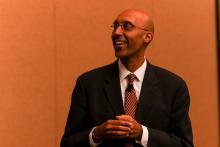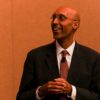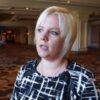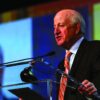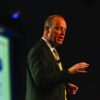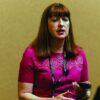Stump the Professor event entertains, educates
Gurpreet Dhaliwal, MD, professor of medicine at the University of California, San Francisco, joked that participating in a “Stump the Professor” event is “like taking an oral exam in front of 300 or 400 people.”
Dr. Dhaliwal passed his “exam” with flying colors on Wednesday at HM17, correctly making a diagnosis of a case of leptospirosis described by his co-presenter Daniel Brotman, MD, SFHM, professor of medicine and director of the hospitalist program at Johns Hopkins University, Baltimore.
Dr. Dhaliwal estimated he’s participated in 100 or more of these sessions at his institution, as a visiting professor, and at national meetings, and he’s even published an article with strategies for creating an engaging session. One of his tips is that the case presented should be “challenging [enough] to solve prospectively” but needs to contain “sufficient clues to make the diagnosis with a high degree of certainty in retrospect.”
While the format is intended to be fun and entertaining, he said that there is no doubt that learning is taking place – both by him and by the audience.
“The most important goal by far and away is to put our most important procedure on display, which is thinking,” he said. “We don’t always make our thinking explicit, and we don’t often open it to scrutiny. So the goal of this session is to do both.”
Talking through his uncertainty can be one of the most interesting aspects of the session, Dr. Dhaliwal told attendees.
“If I can’t say something insightful, let me try to capture my uncertainty and crystallize that for you so you recognize that as a real part of medicine,” he said.
The HM17 audience seemed to enjoy trying to solve the case and thinking through the clinical reasoning as Dr. Dhaliwal did the same. The diagnosis of leptospirosis in Wednesday’s case surprised the audience, many of whom shook their heads in amazement.
“I pick cases based on being dramatic and/or unusual enough to provide some clinical excitement and diagnostic challenge,” he said.
An “important bonus,” Dr. Dhaliwal said, is that the audience would learn something about the disease that’s being discussed.
“I suspect I learn the most, especially if I get the case wrong,” he told attendees. “After living it on stage, there’s a lot that I upload in my memory for the next time I see something like this in real life.”
He said he’s probably batting about 0.500 on getting the cases right.
“I’ve had plenty of experiences where I’ve pulled the rabbit out of the hat at the last minute, and it’s been glorious, and I’ve had plenty of experiences where I’ve fallen flat on my face, and I didn’t have a prayer of knowing it, either, because my thinking was off, my knowledge was deficient, or it was something I had never heard of before,” he said. “The one thing that’s always rewarding is that people are always very appreciative that I shared my thinking, whether it’s a flash of insight or a total stumble or an uncertainty that I have.”
It might seem that the event has more of a potential downside than upside: If he gets a case right, he’s doing what he should do; if he gets one wrong, it might be embarrassing. He doesn’t see it that way, he told the crowd.
“It’s a total joy to be up here,” Dr. Dhaliwal said. “There’s no doubt that standing in front of a crowd induces a little bit of anxiety, but it is a lot of fun to do. And I had mentors who did this, and then I started to learn it myself, and at some point, you get past the anxiety of being right or wrong, and you just enjoy being up there.”
